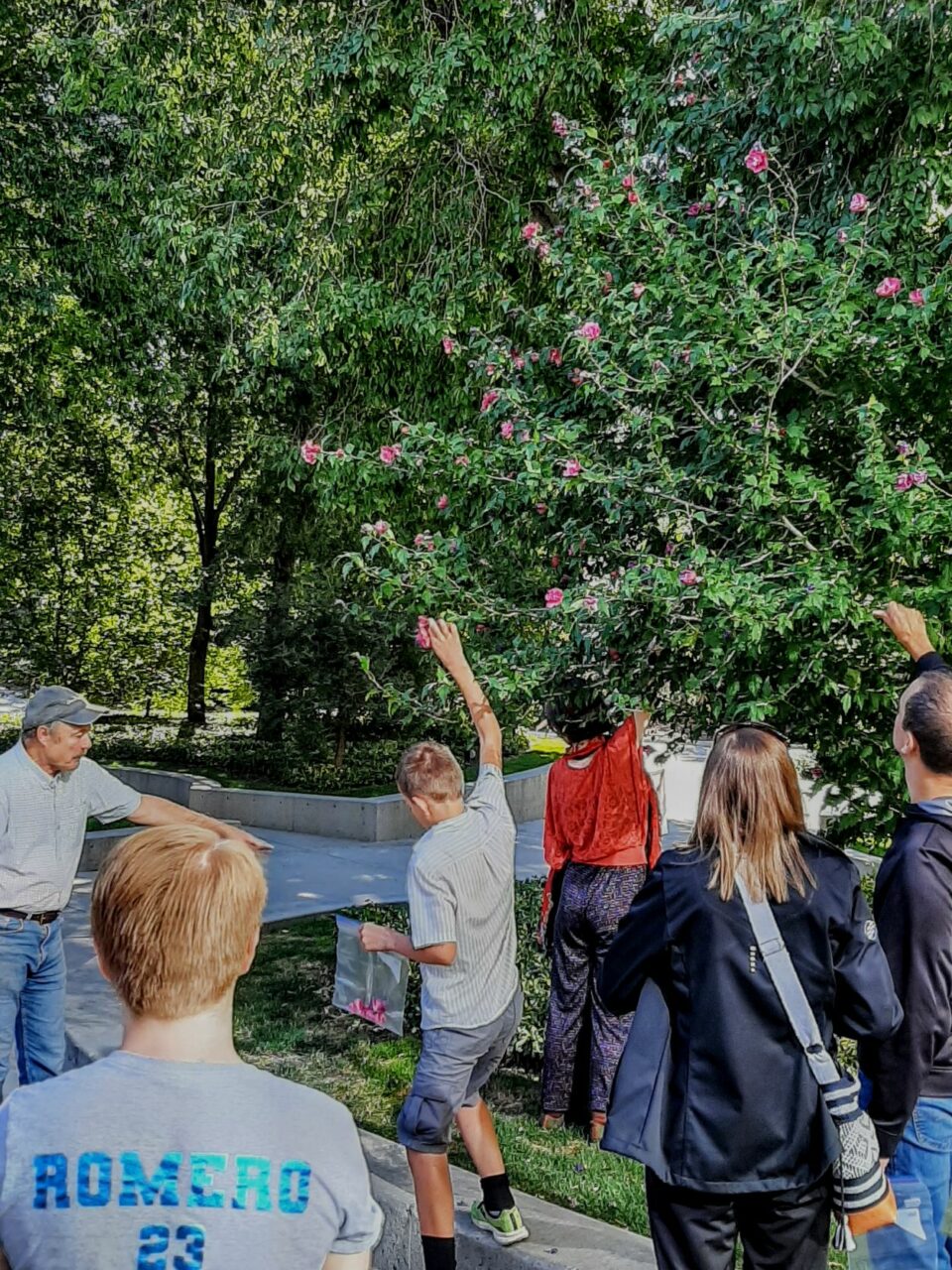
BYU plant and wildlife sciences professor Tom Smith took a group on an early morning wild edible tour around BYU campus on Sept. 24.
Smith said he has been eating and using wild plants for a long time.
“I do not live off the land. It is more about making your day-to-day life more interesting,” Smith said. “I just think I have a fuller, richer life by involving those things and partaking into our forager past.”
Smith said he believes there is hunting and gathering in our genes.
For $12, anyone 12 years and older could join Smith on a wild edibles tour of BYU campus, put on by the Bean Life Science Museum. The tour has been going on for a few years.
Before starting the tour, Smith said many people are worried about poison. However, most of the plants they see tend to only have an individual poisonous part, but the whole plant is not.
According to Smith, an example of this is tomatoes; the vines are part of the nightshade family which are poisonous from alkaloids.
Smith said a great plant-identification app to use is Seek by iNaturalist. Users can take pictures of different species and get accurate, location-based identification suggestions.


The first stop for the group was outside of the Joseph F. Smith Building at a hibiscus tree. Smith said hibiscus can be used in tea, jam, ice cream and marmalade.
Smith pointed out crab apples and their trees while walking to the next location. Smith said these berries are perfectly safe to eat, though they are found squashed on the ground everywhere.
“I find people are pretty intrigued when they learn that things under their feet are very valuable,” Smith said.
Other trees around campus also have edible features.
Smith said the maple tree seeds are called samaras, more commonly known as “helicopters”. Pine tree bark, seeds and needles may be used in a variety of ways. Their needles are most often used in tea because of their high levels of Vitamin C. Oak tree acorns can be used for pure eating or grinding to make flour.


Cynthia Compton, who lives in Orem, said she was really excited about learning how to make acorn flour.
“It allows me to be a good steward while adding more variety to your diet,” Compton said.
Smith also showed the students a plethora of Oregon grapes, which grow in many places on campus.
The group found berries such as junipers, currants and elderberries toward the south end of campus.
Smith said junipers are used as a spice or flavoring for a dish, found in gin, on top of fish or steak, for example. Currants are used in pies and other desserts. Elderberries are used for the common cold or flu.
The tour stopped for some time so the group could pick Chinese pears from a Pyrus pyrifolia, a fruit tree native to east Asia found next to the Life Science Building.
Raul Ramos, a BYU student majoring in environmental science, said he loved Chinese pears the most. “We need more events like this to eat and learn more about wild plants,” Ramos said.
At the end of the tour, Smith continued to point out other small edibles such as oregano, mushrooms and day lilies.


Though the tour was filled with edible plants, Smith made sure to point out berries to not eat: nightshade berries and common yews. Nightshade berries, mixed into the Oregon grapes near the duck pond, and common yews seeds, found around campus, are poisonous due to the alkaloids.
“Common yews specifically stop cell division,” Smith said. “Therefore they are used for cancer, blocking cancer cell growth by stopping cell division and killing them.”
At the end of the tour, the group stopped in the JFSB Foreign Language Activity Commons to taste some treats made with the food found around campus. Participants ate acorn flour cookies, oak flour bread with elderberry syrup and crab apple pie. Handmade chocolate was also handed out.
“Using and picking these resources around you is a great way to spend time with family, lighten up conversations and enhance your food while introducing new tastes,” Smith said.




